An example of our work:
CaveSim Trailer3
When it comes to our mobile cave projects, Trailer3 is our most advanced and impressive exhibit experience. Featuring 150 feet of passage and a wheelchair-accessible area, the exhibit fits neatly inside a 31 foot trailer.
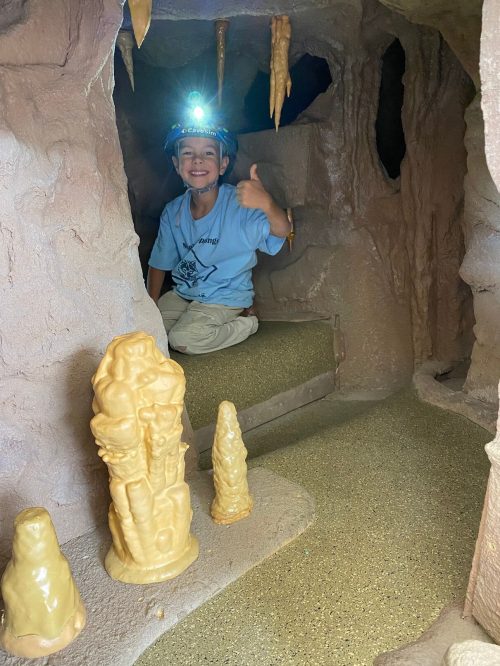
About the project
We began work on Trailer3 in July of 2023, right after delivering Trailer2 to Great Basin National Park. About 12 months later, we debuted Trailer3 at the National Speleological Society convention in Sewanee, TN. Both kids and adults immediately loved the new exhibit. In the first year after its debut, visitors took over 30,000 trips through the cave, and it traveled to 77 days of events in 10 states.
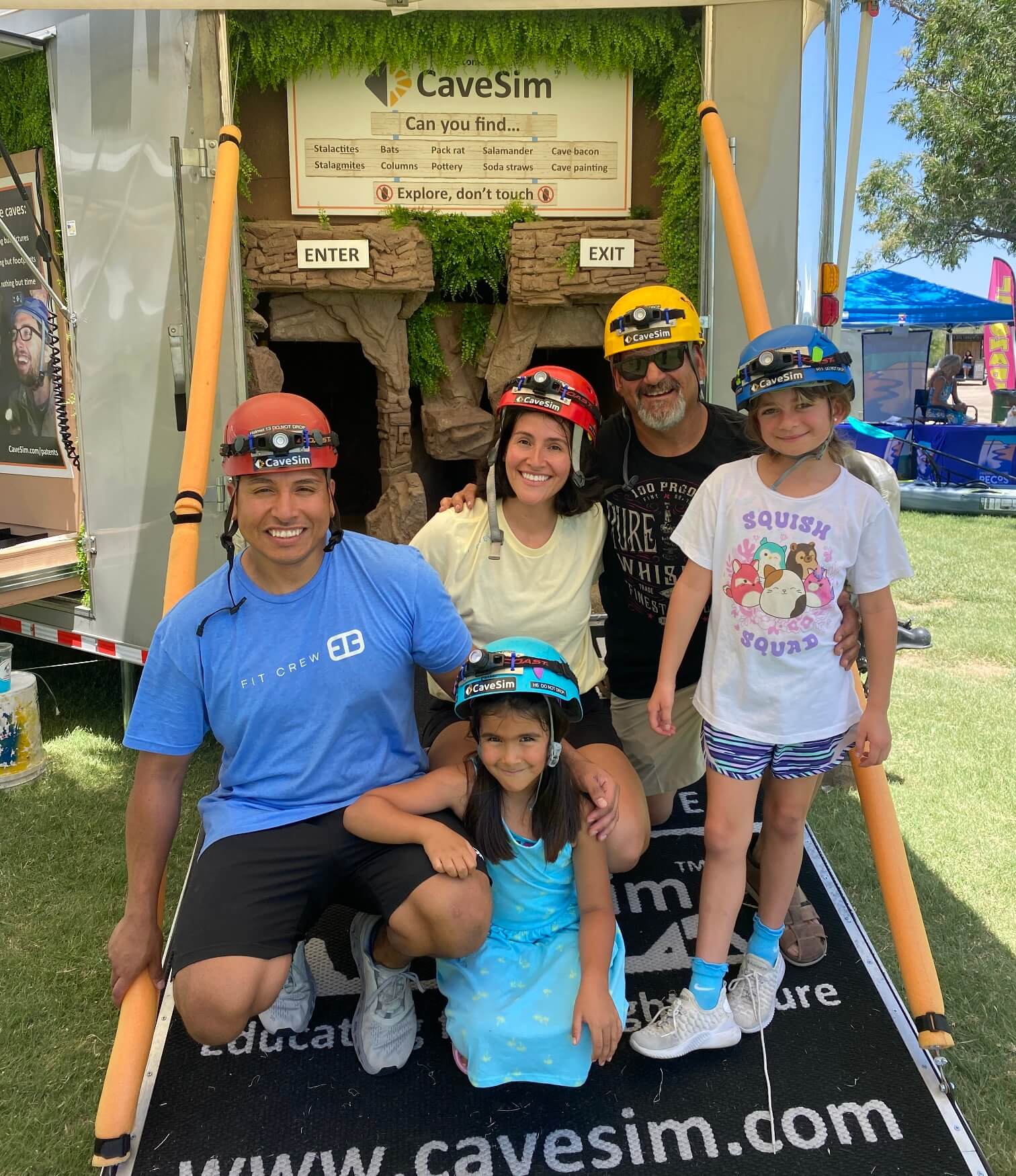
-
Technology makes CaveSim Engaging
Like every cave we create, this one is filled with a network of tiny computers that teach visitors about conservation. If a visitor bumps a stalactite, gets too close to a cave painting, or touches a bat or packrat, they receive feedback from the system to help them learn to be more careful. Because some visitors have visual or auditory impairments, we use both visible and auditory feedback, including red lights, buzzers, and educational audio recordings. After visitors exit the cave, they review their score on computer screens.
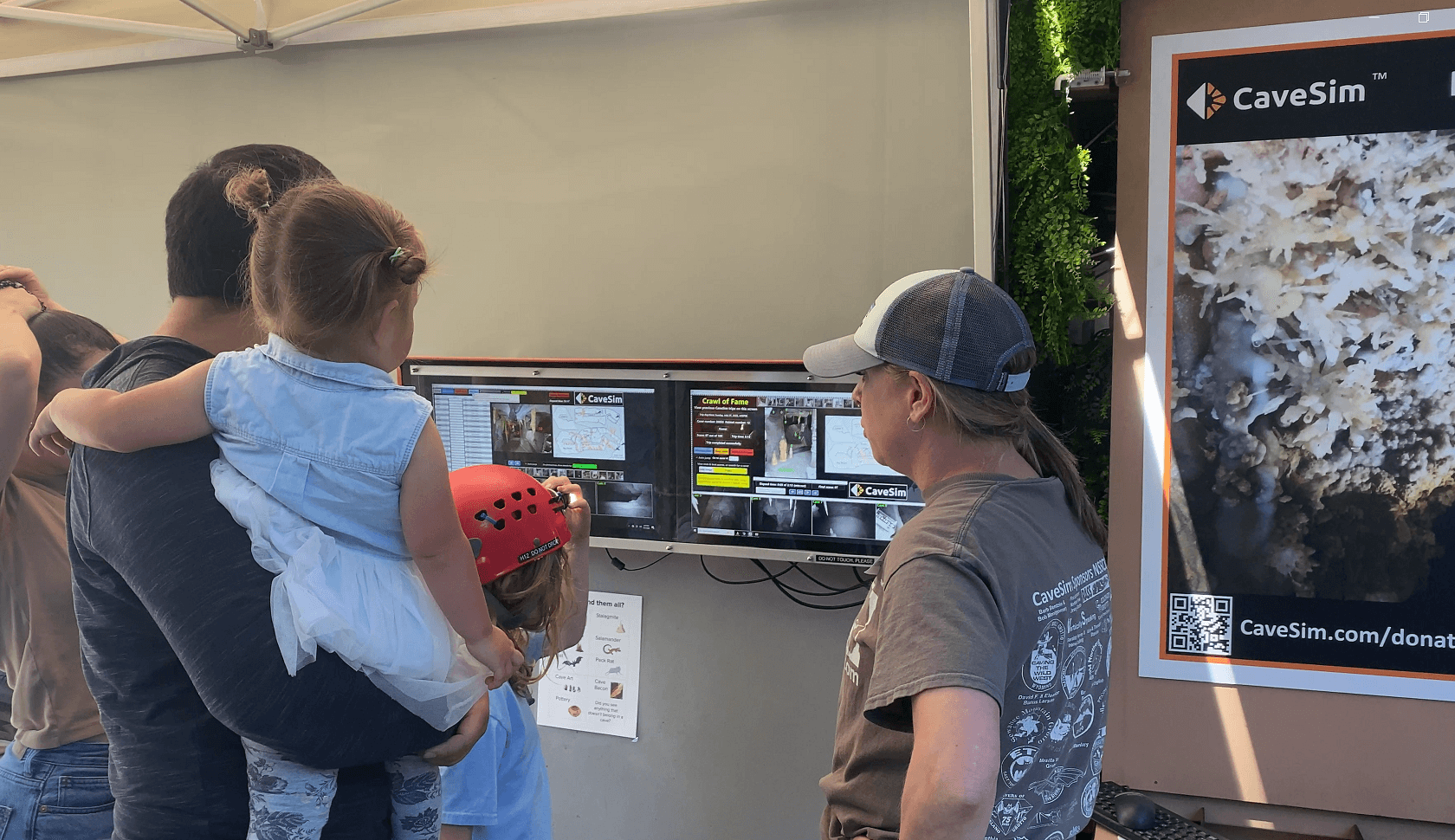
-
New helmet tracking improves scoring
CaveSim Trailer3 includes helmets that track each visitor's progress through the mobile cave. This allows the system to determine which visitor touched which cave formation, and each visitor receives their own score after exiting the cave. A digital map of the cave allows family members outside the cave to track each explorer as they navigate the cave passage. This system was designed and built entirely by the CaveSim inventor, and makes the cave very easy to operate. The helmet trackers automatically turn the caving headlamps on (and off) when visitors enter (and exit) the CaveSim system.
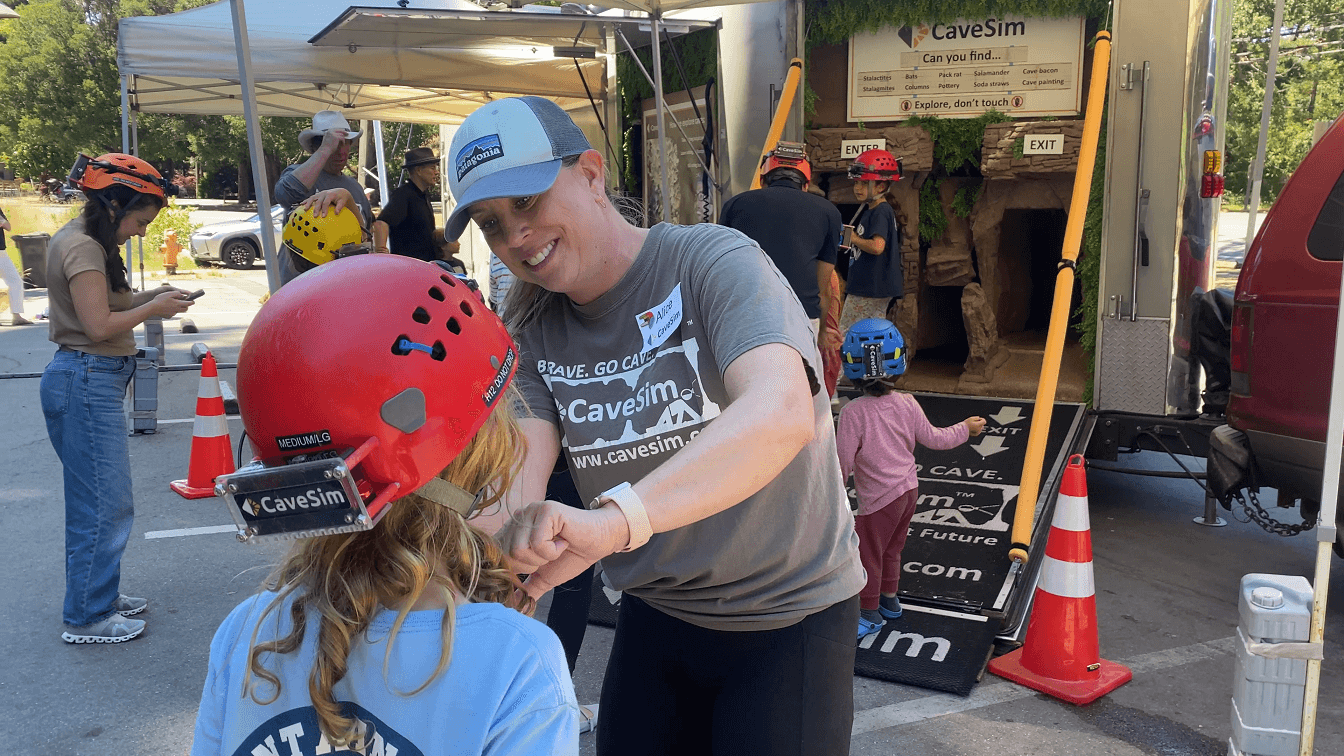
A professional display
Worthy of the museums, show caves, zoos, and other organizations that we work with, our mobile cave is a highly professional display, both inside and out. An easy-to-use display drawer holds interpretive materials as well as helmets for visitors. The helmet batteries charge right in the storage cubbies, and colorful, eye-catching signage and photos teach participants about cave conservation. Greenery around the exhibit is so realistic that even well-educated adults have mistaken it for real plants.
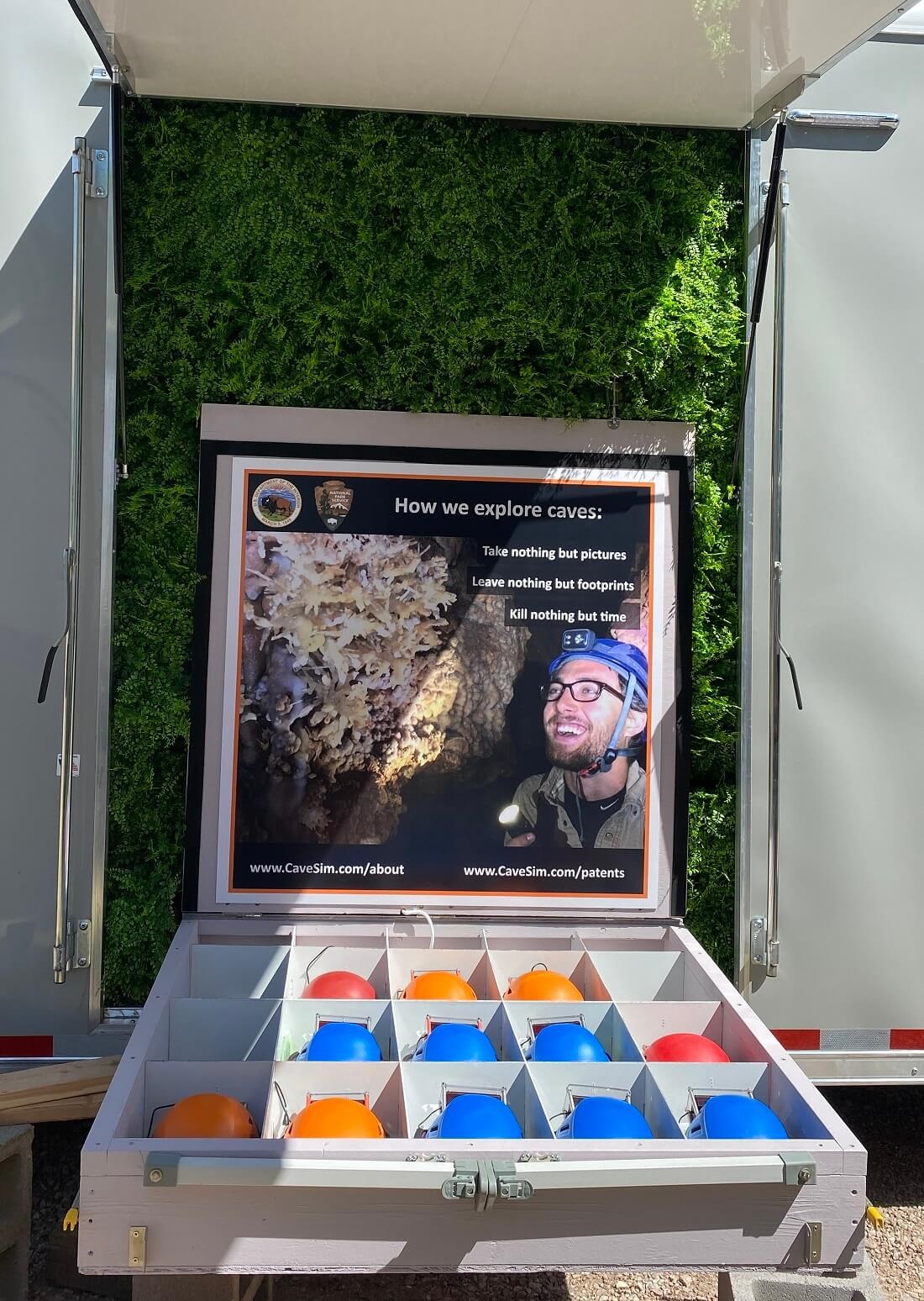
As shown below, a new vertical caving tower mounted to the roof of the trailer provides an easy-to-use educational program about physics, vertical cave exploration, rope safety, and rescue. A wheelchair ramp and accessible door (on the right side of the picture below) allow participants of all ability levels to experience CaveSim.
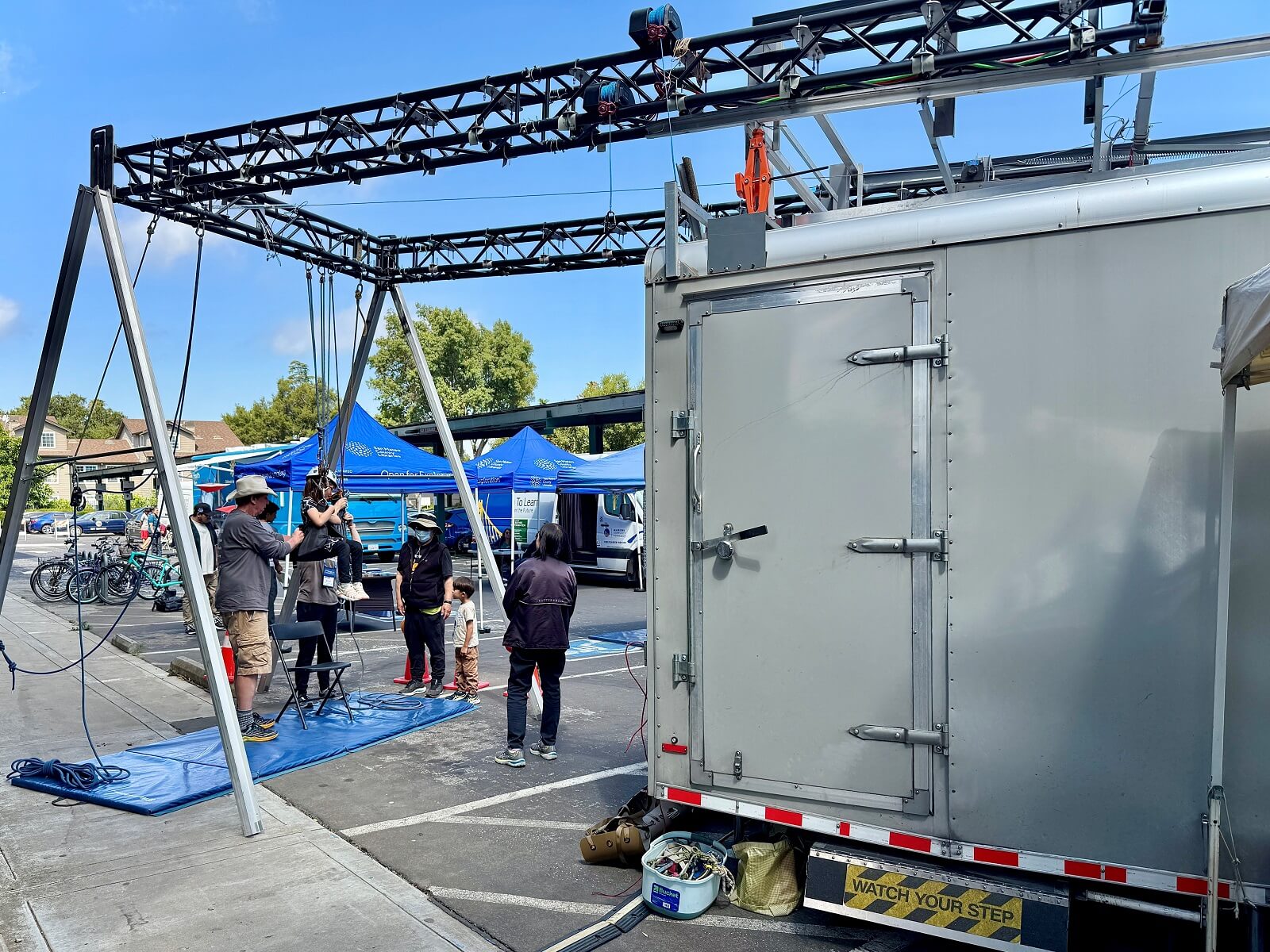
The specs:
- 150' of realistic cave passage with three levels
- Three climbing ropes, dozens of climbing holds
- A wheelchair accessible area called "The Big Room"
- Over 50 artificial cave formations, critters, and artifacts, all with electronic sensors to give visitors a careful-caving score as they explore
- Padded flooring with durable top layer and a rock-like appearance
- Eight night-vision cameras for visitors to watch friends
- 31' trailer length
- ~10000 lbs total weight
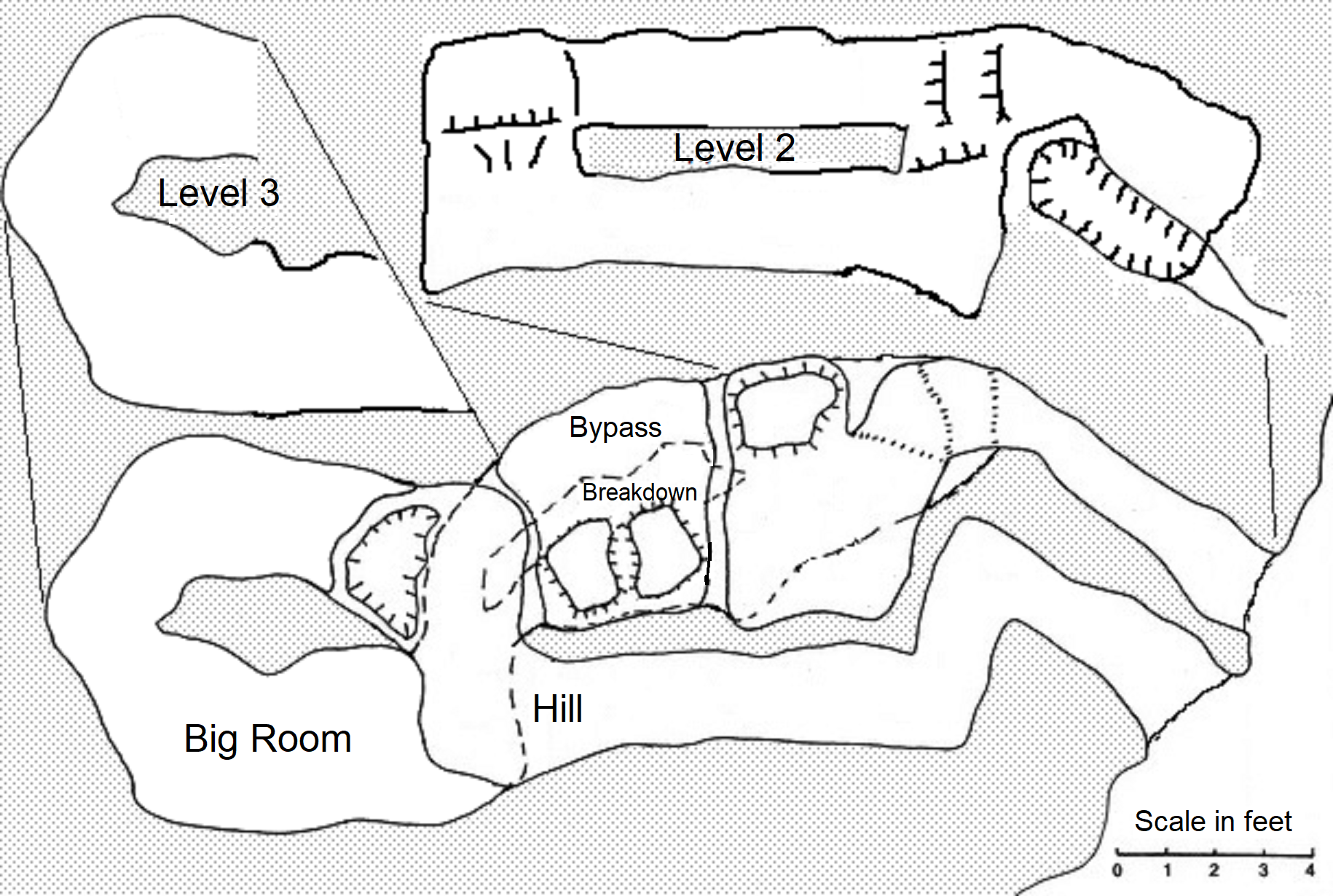
A photo tour of CaveSim Trailer3
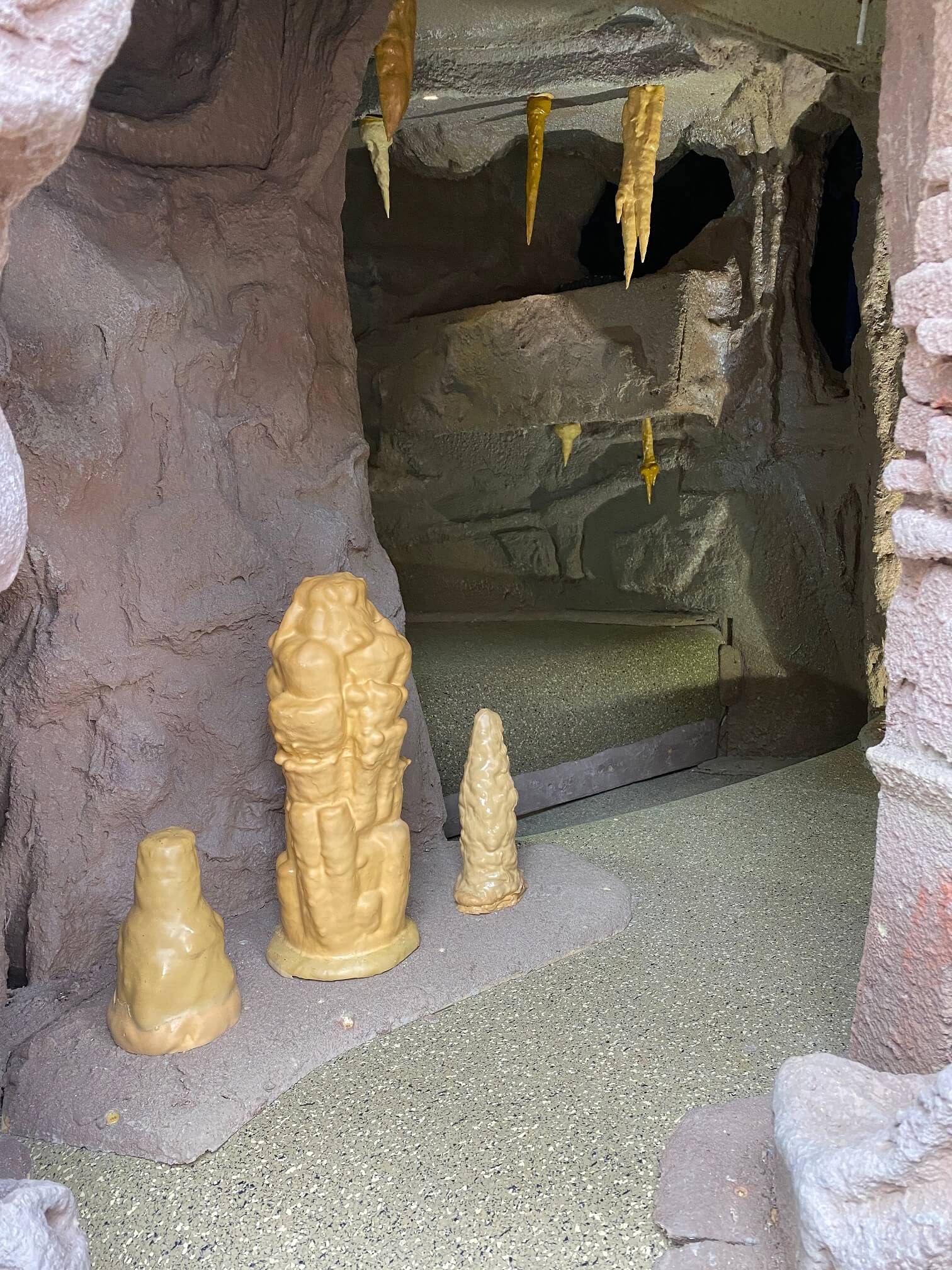
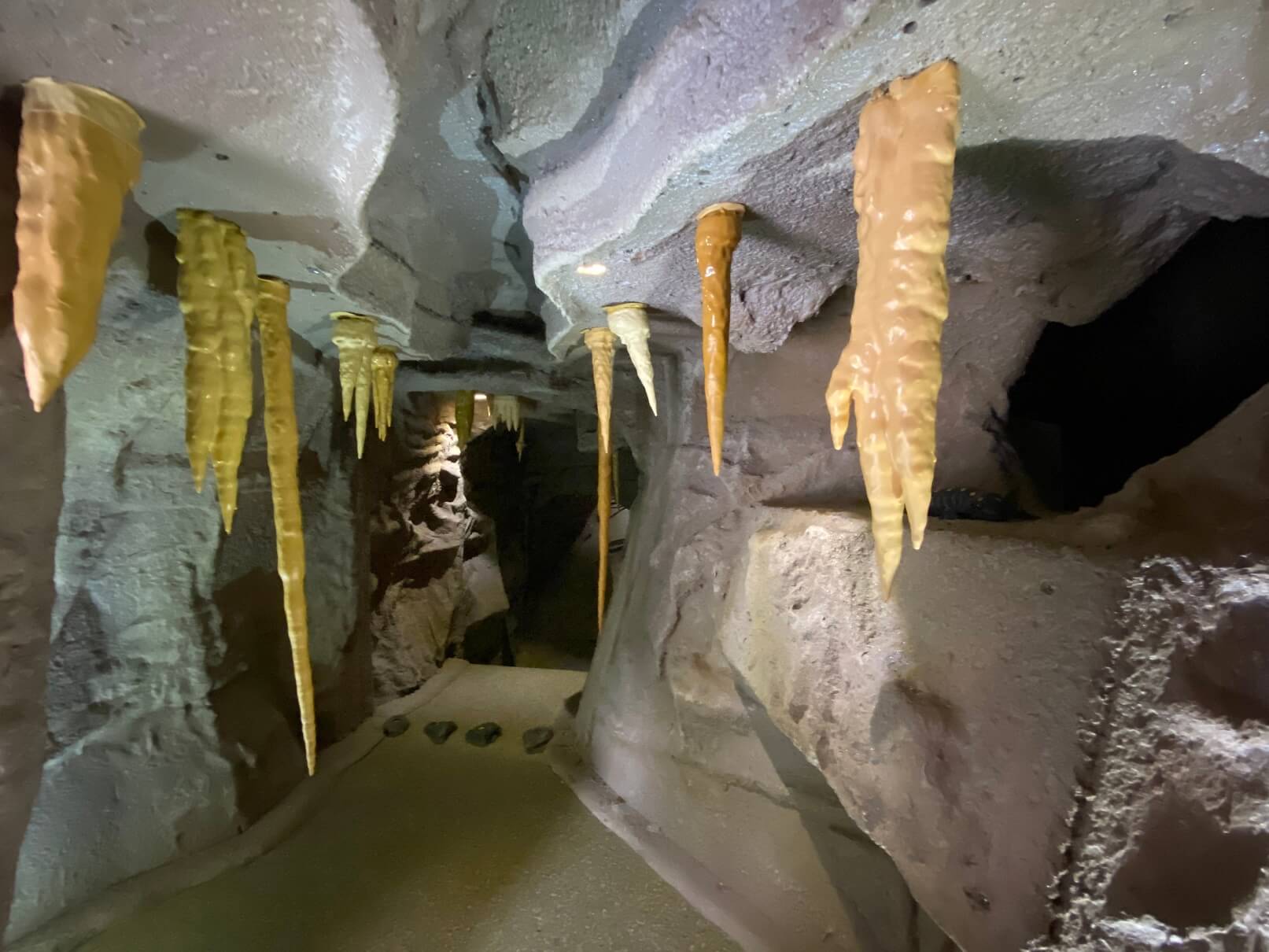
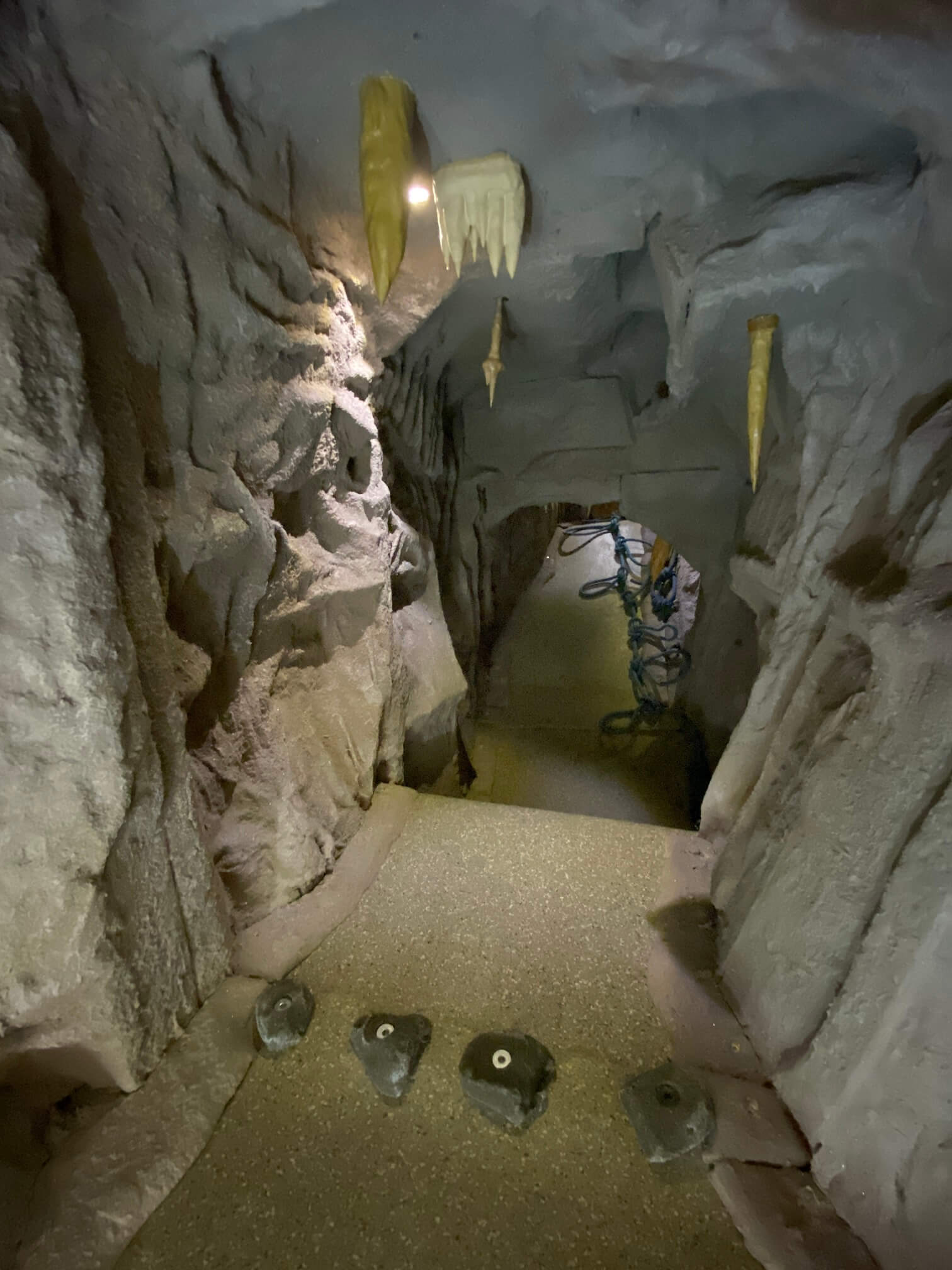
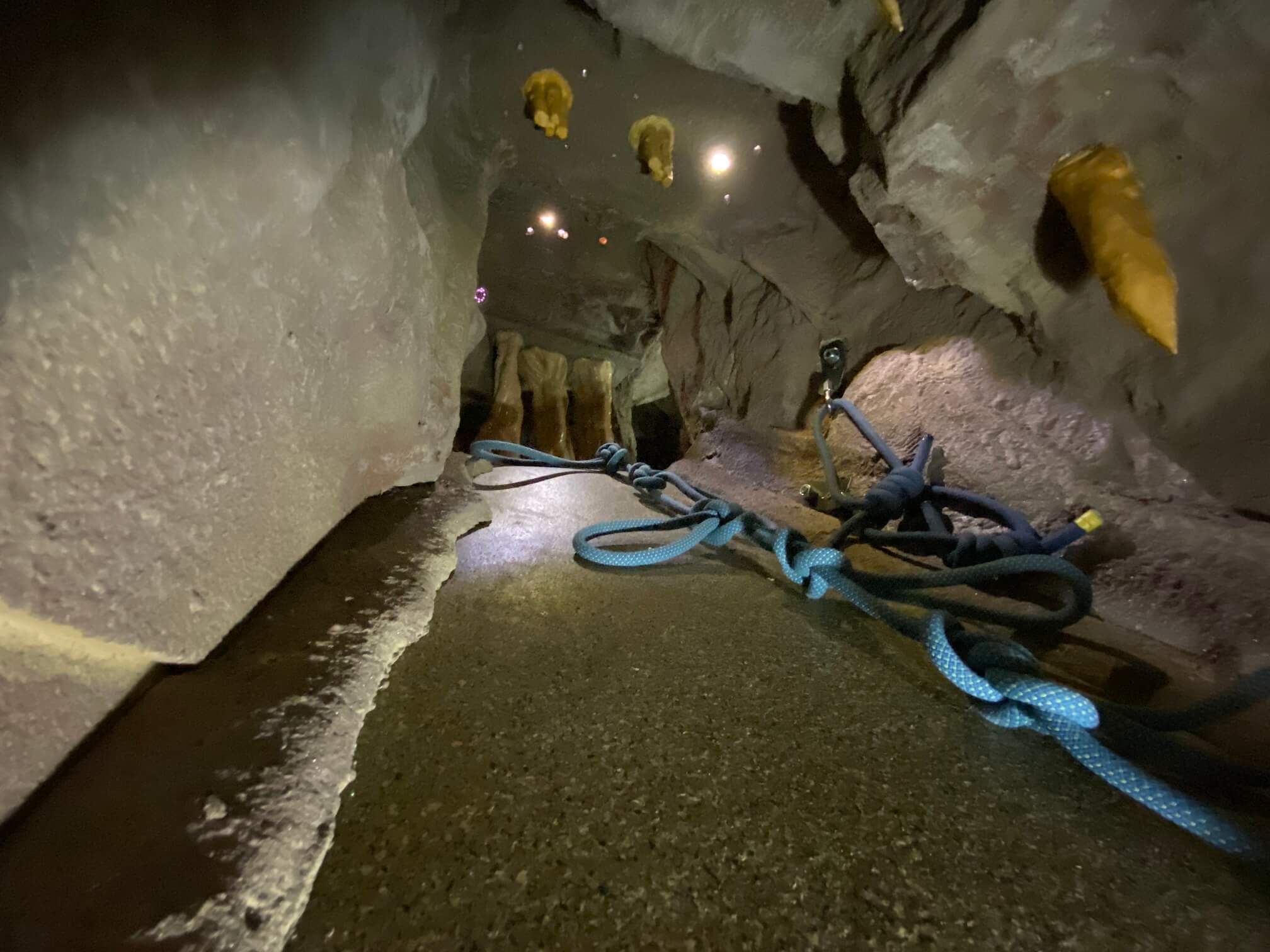
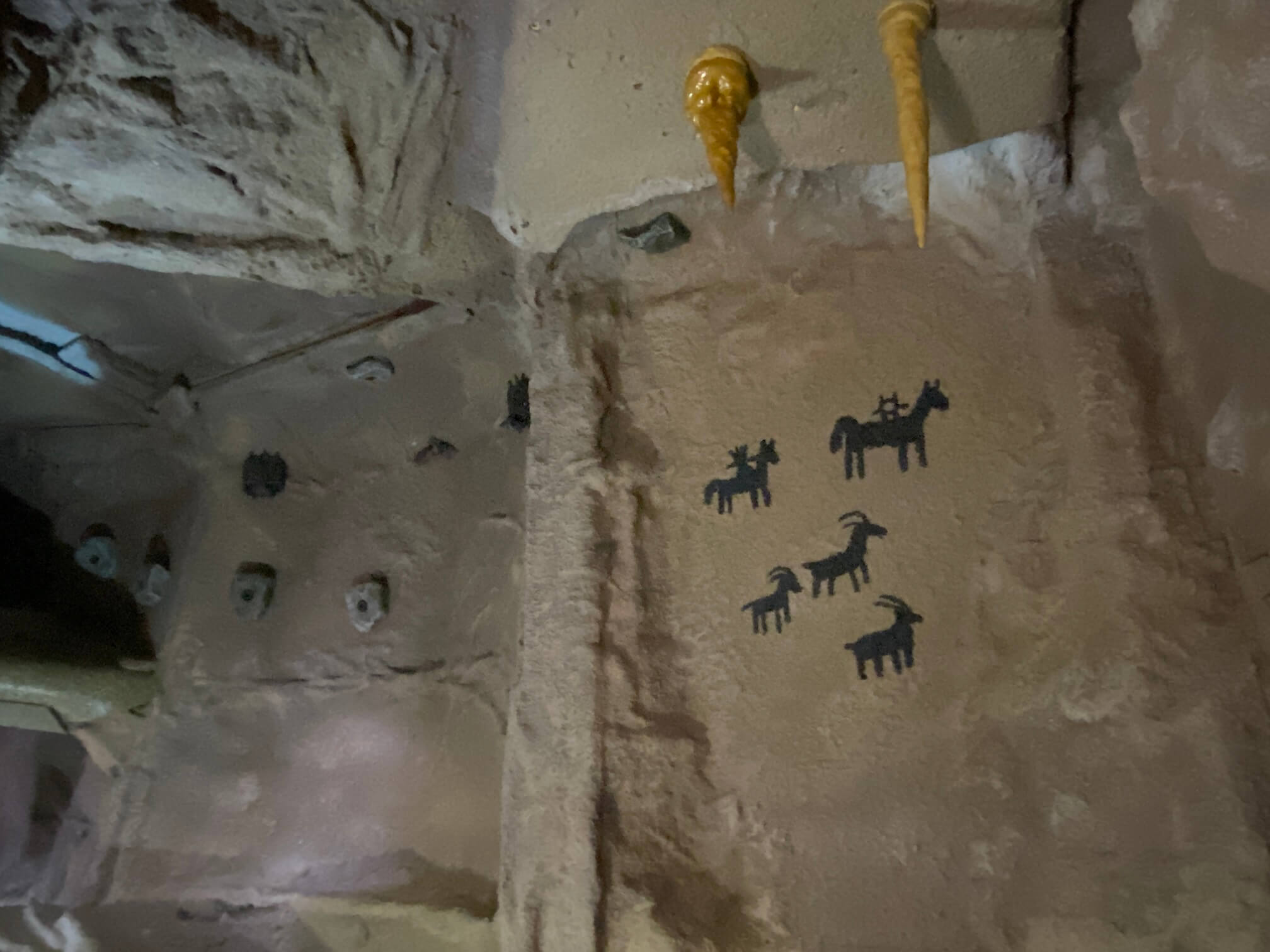
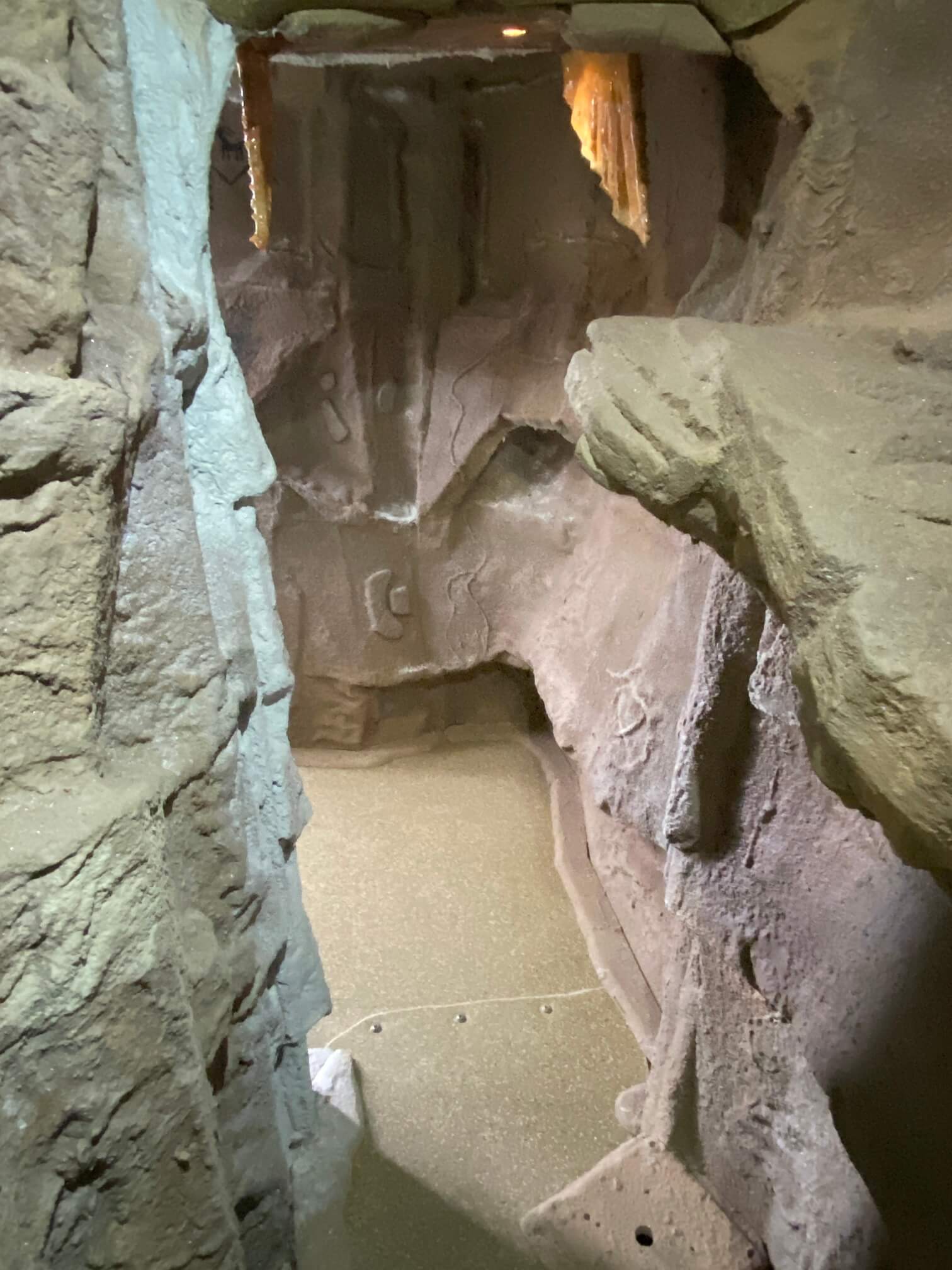
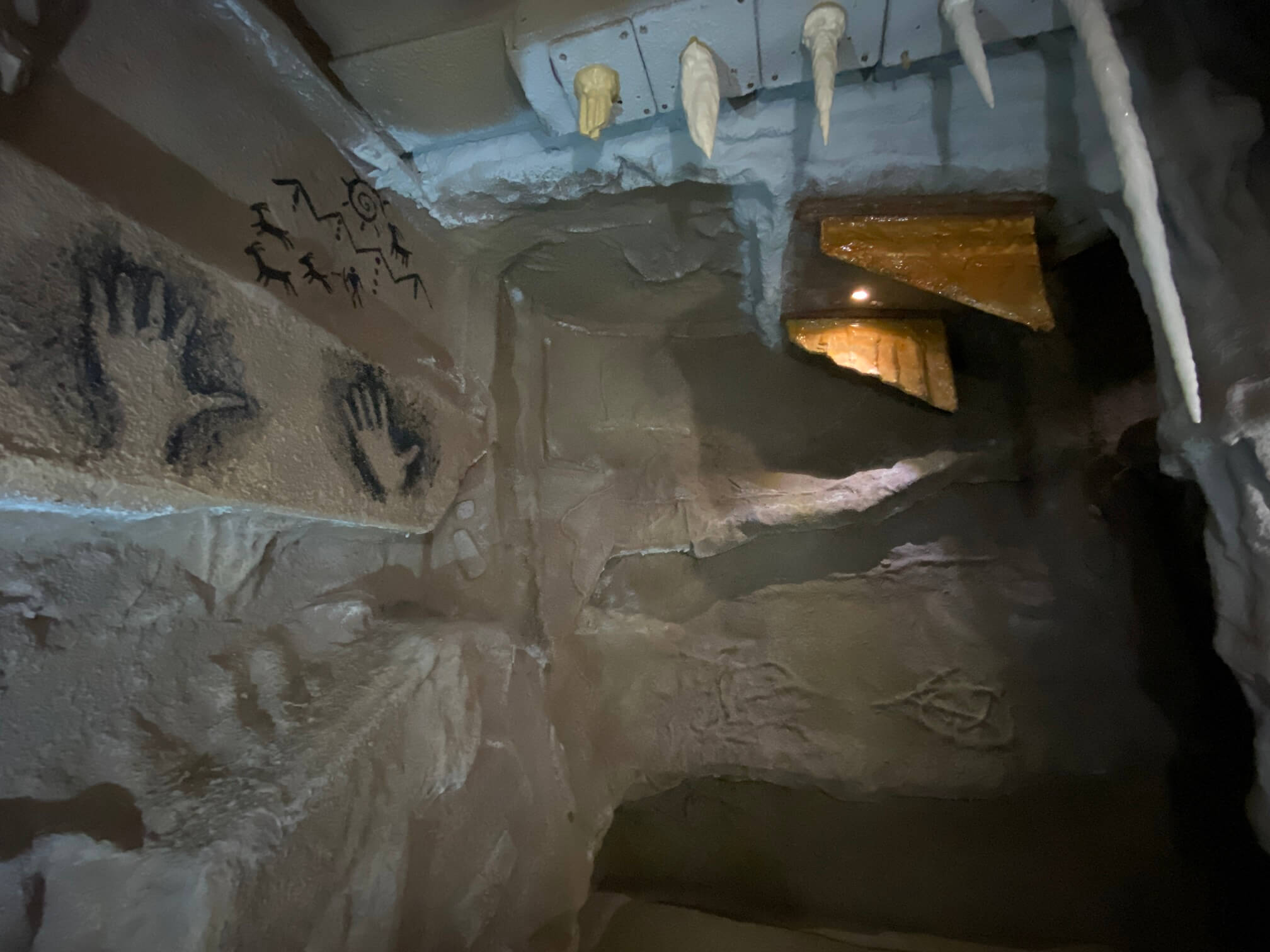
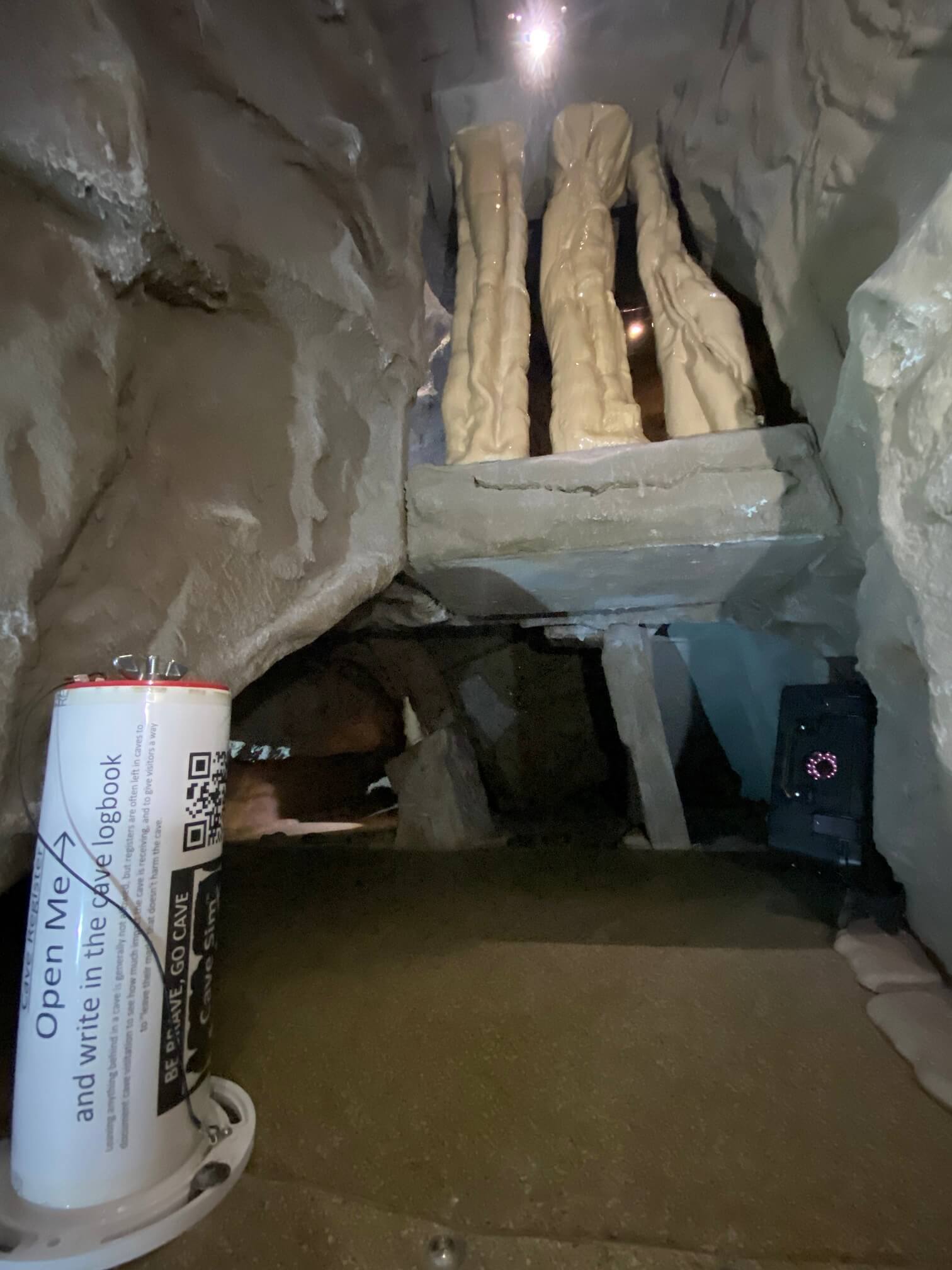
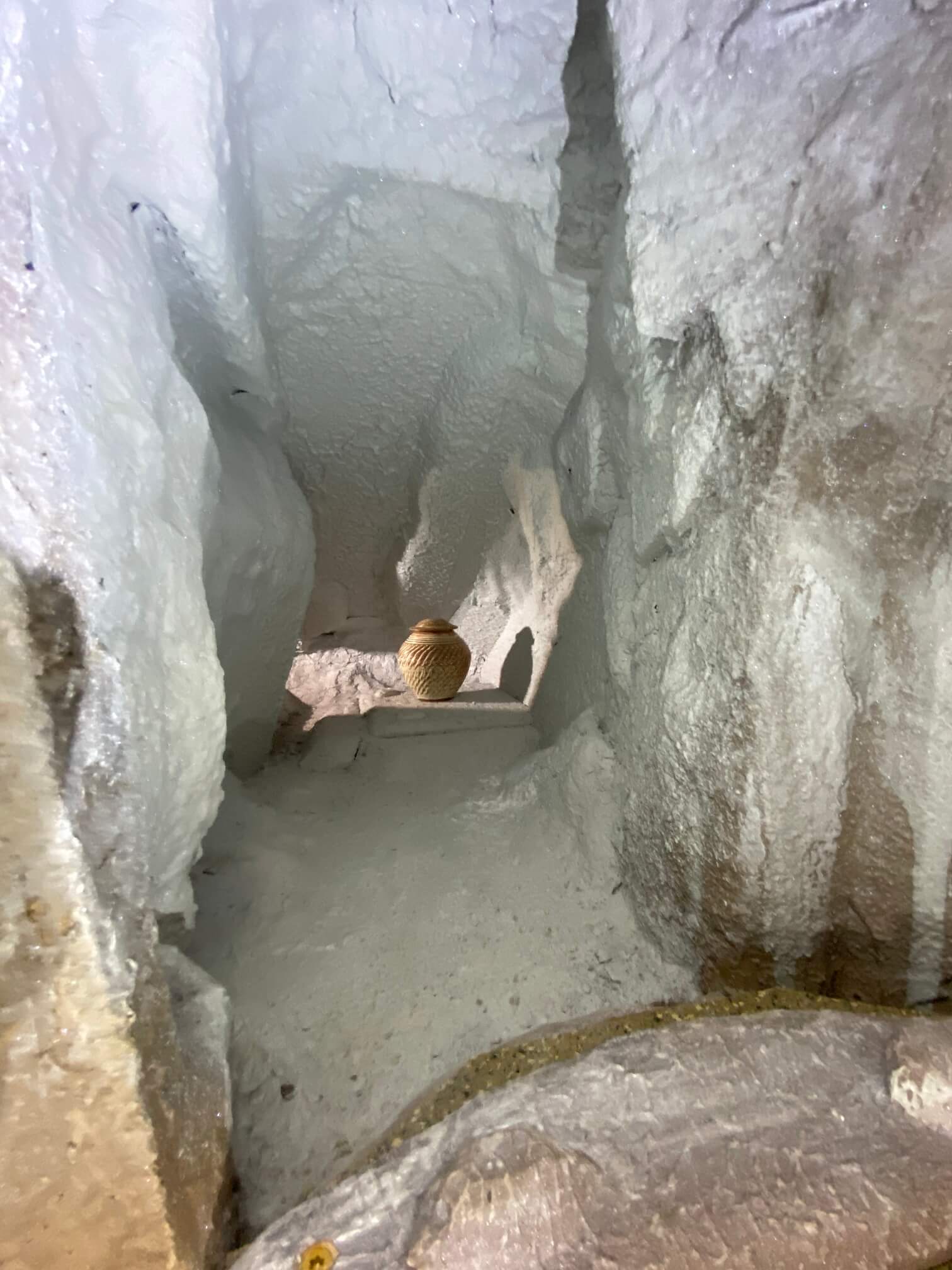
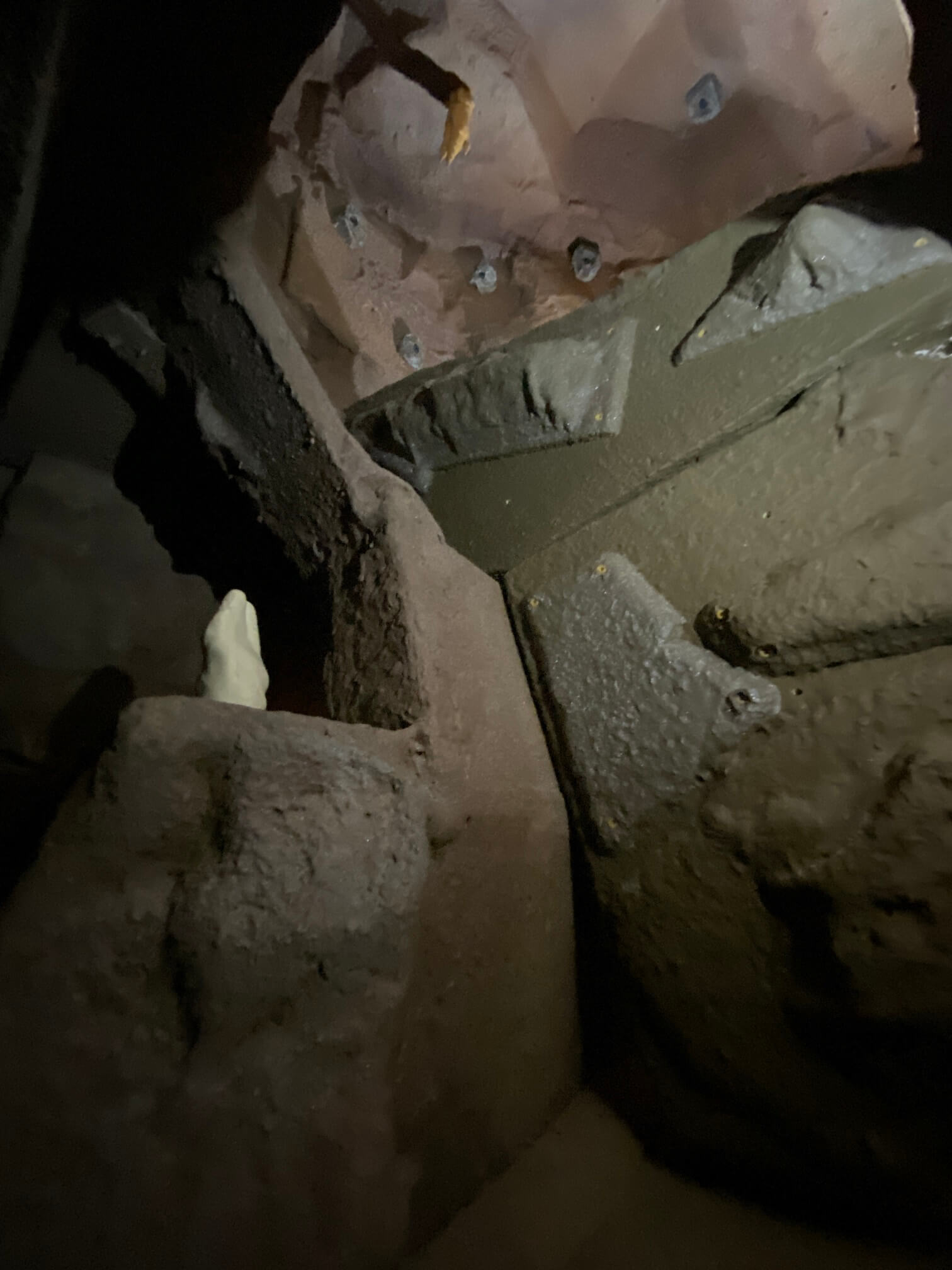
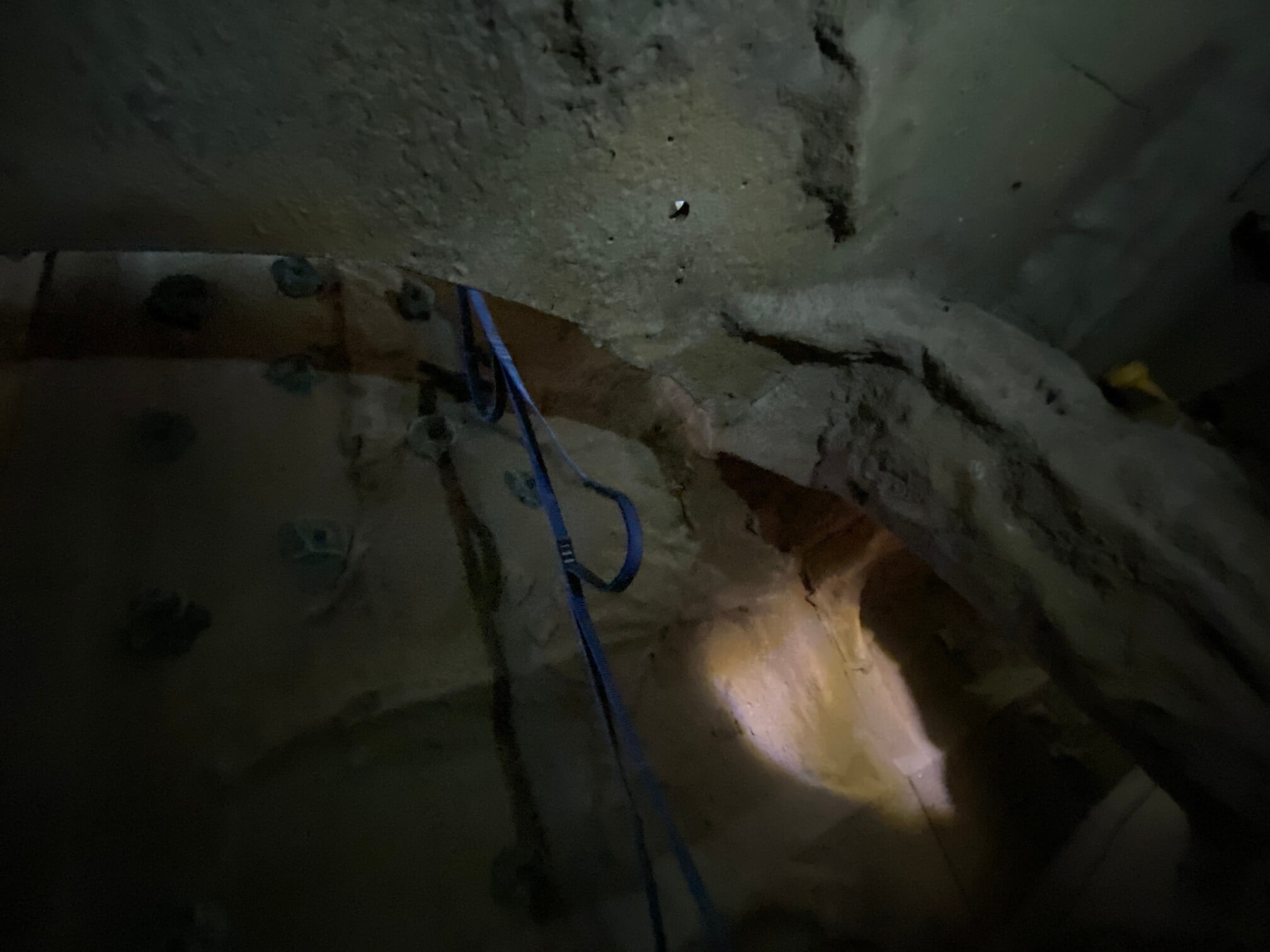
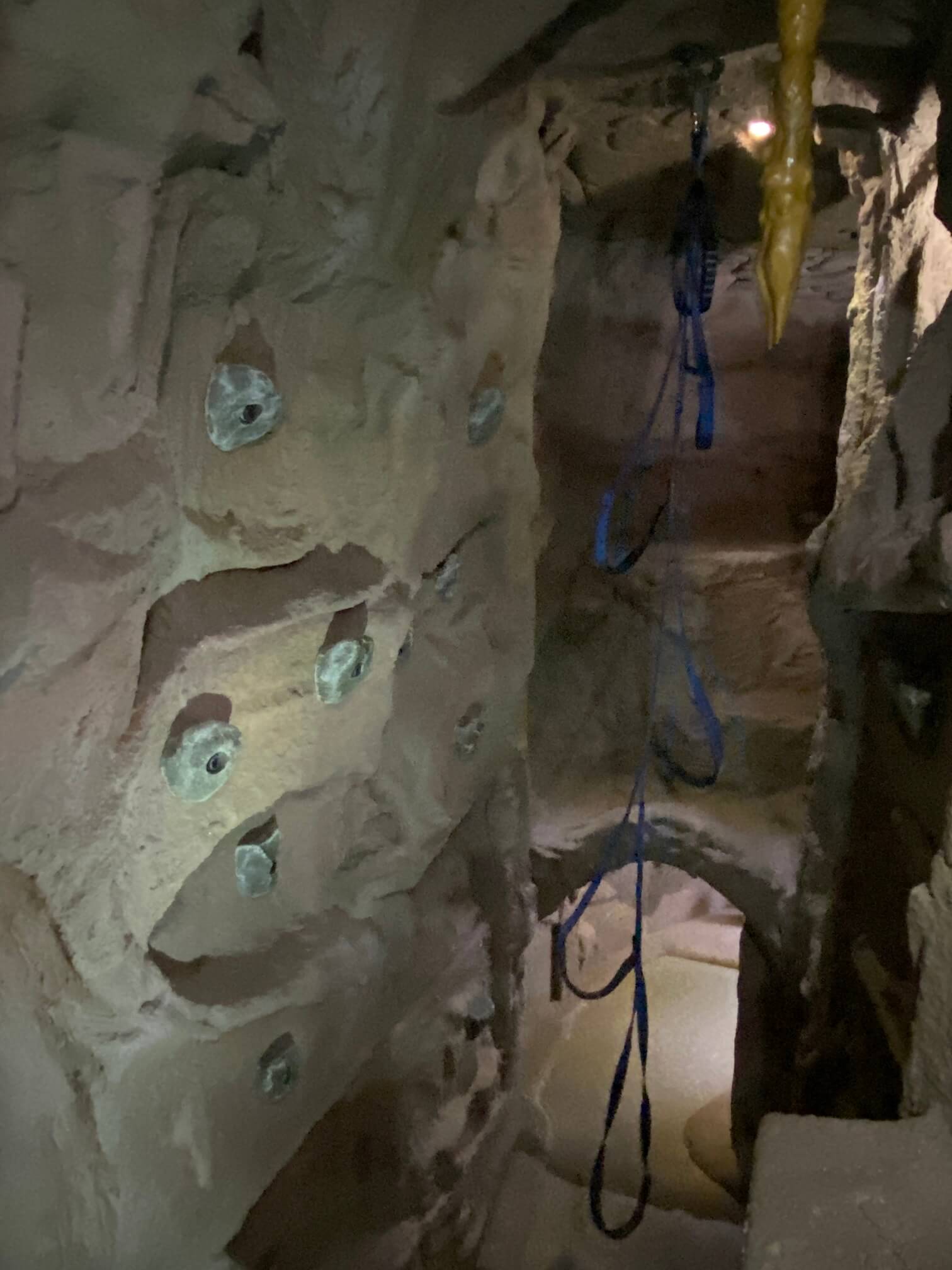
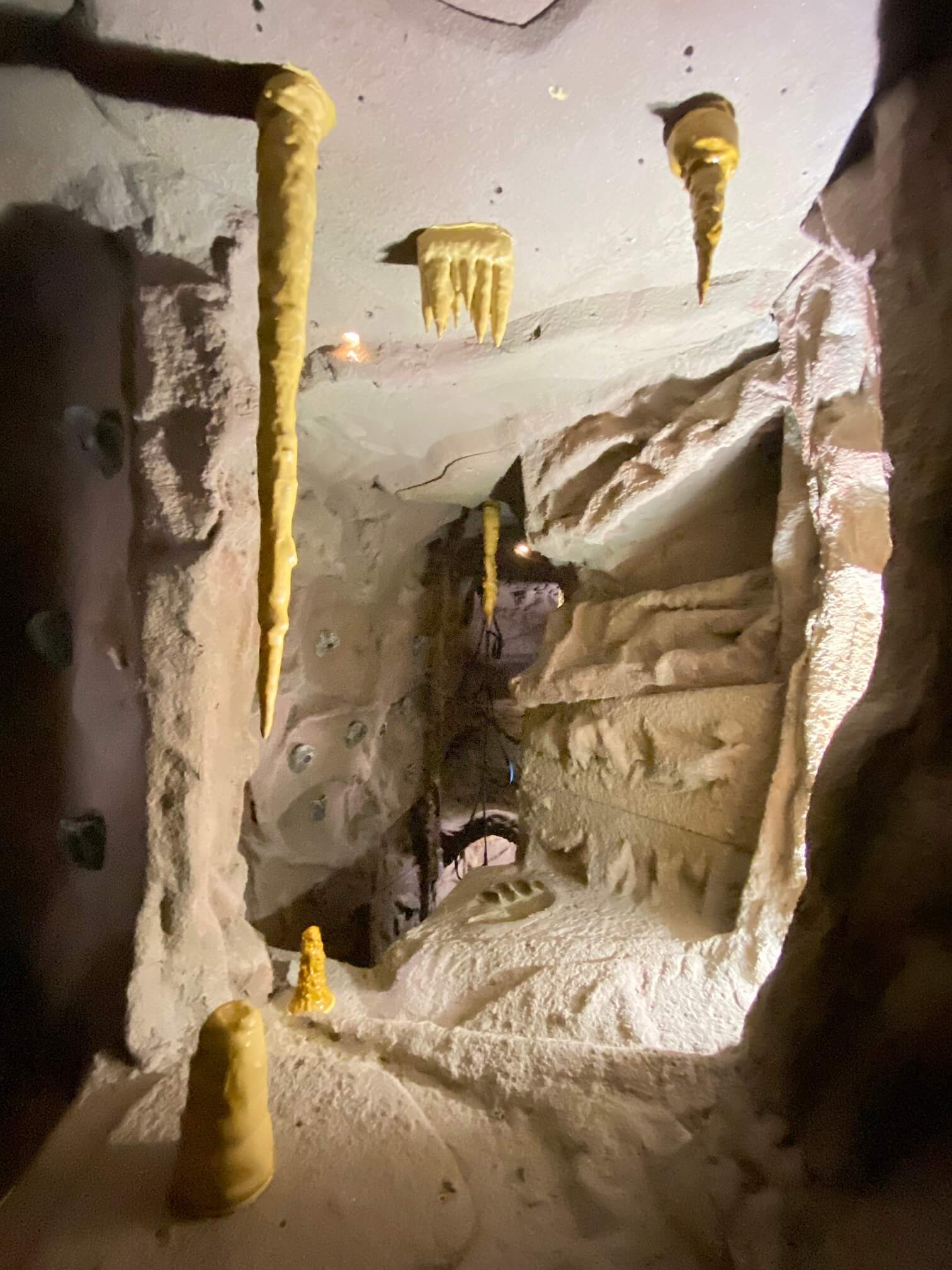
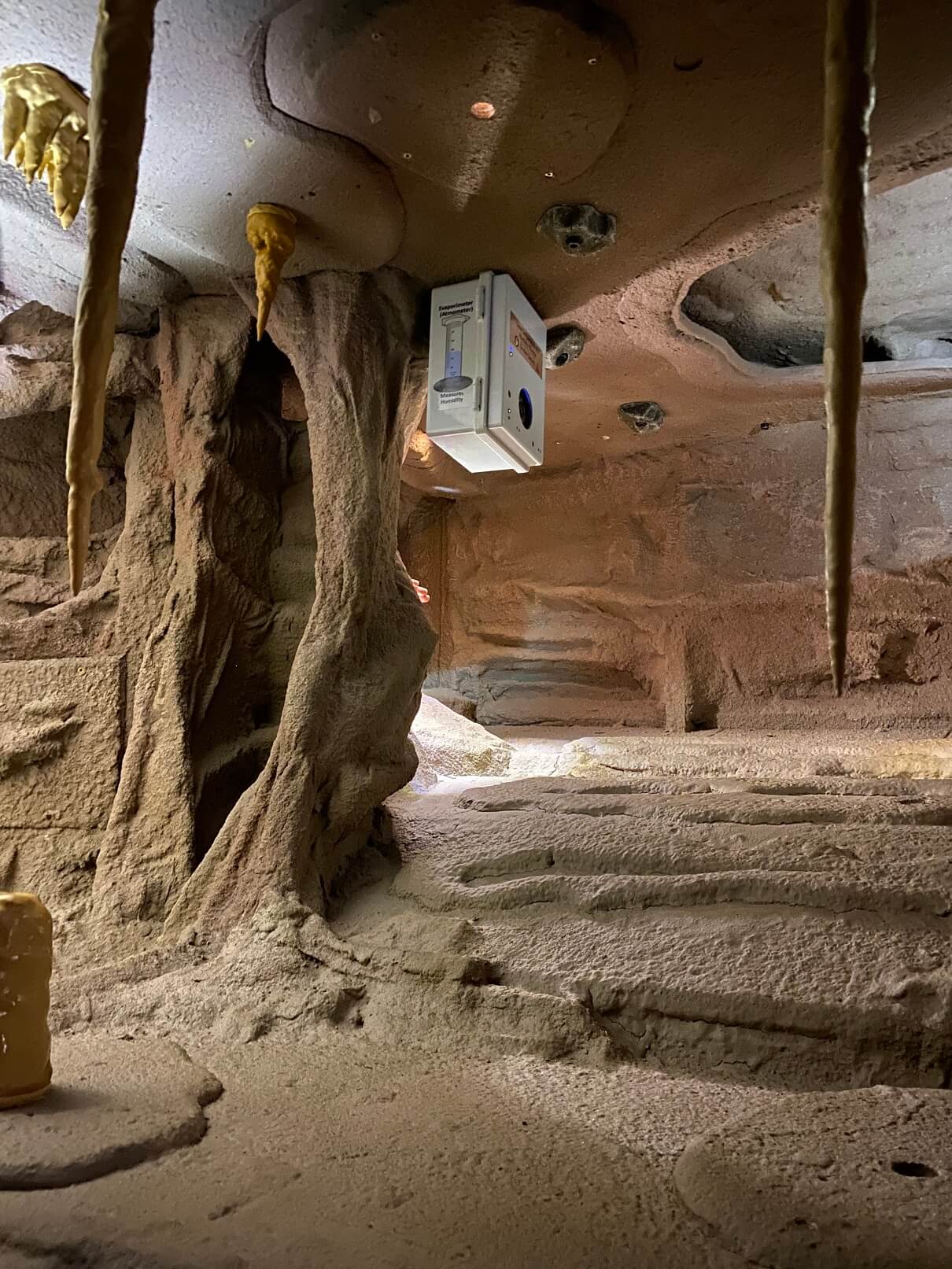
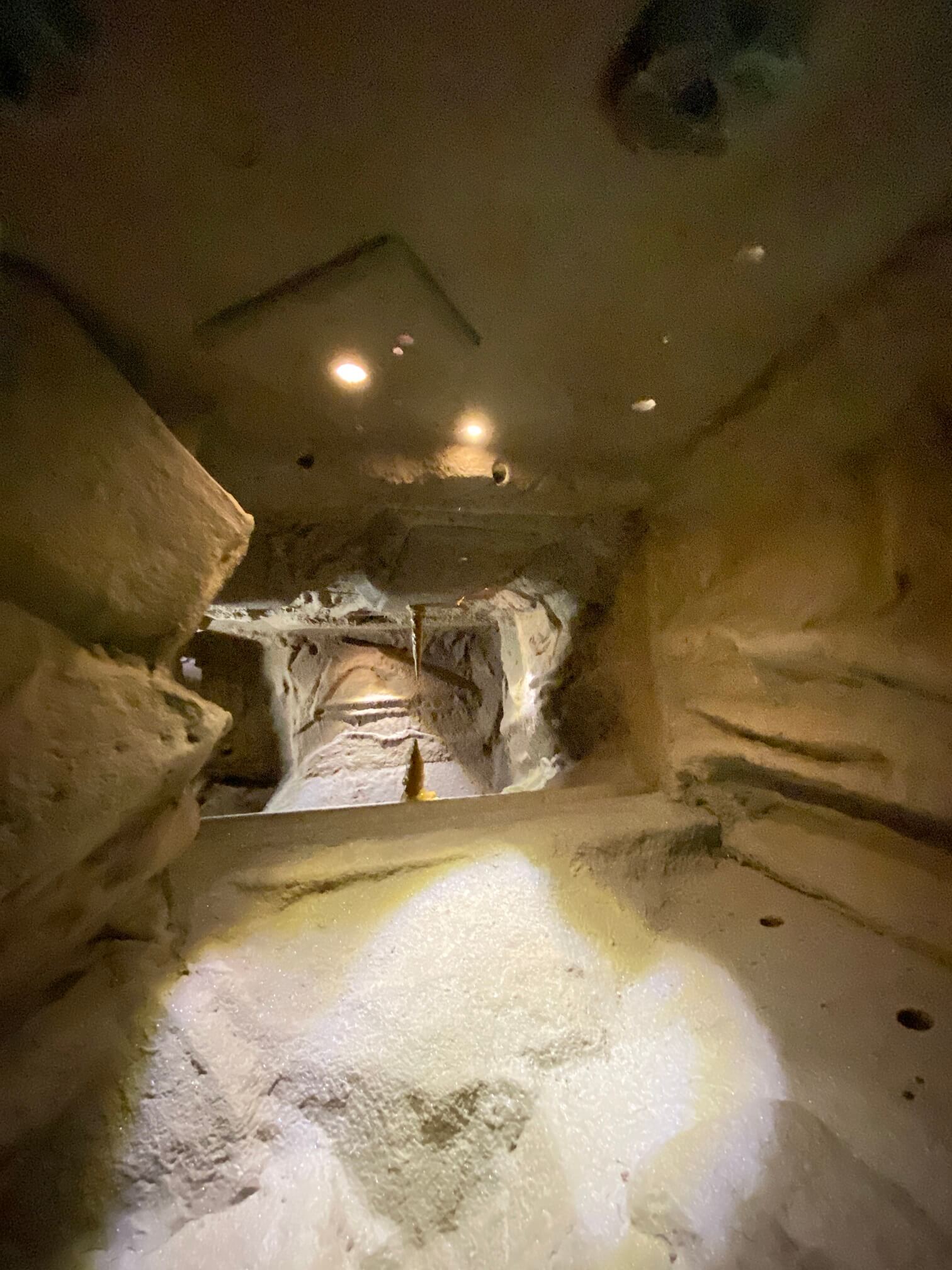
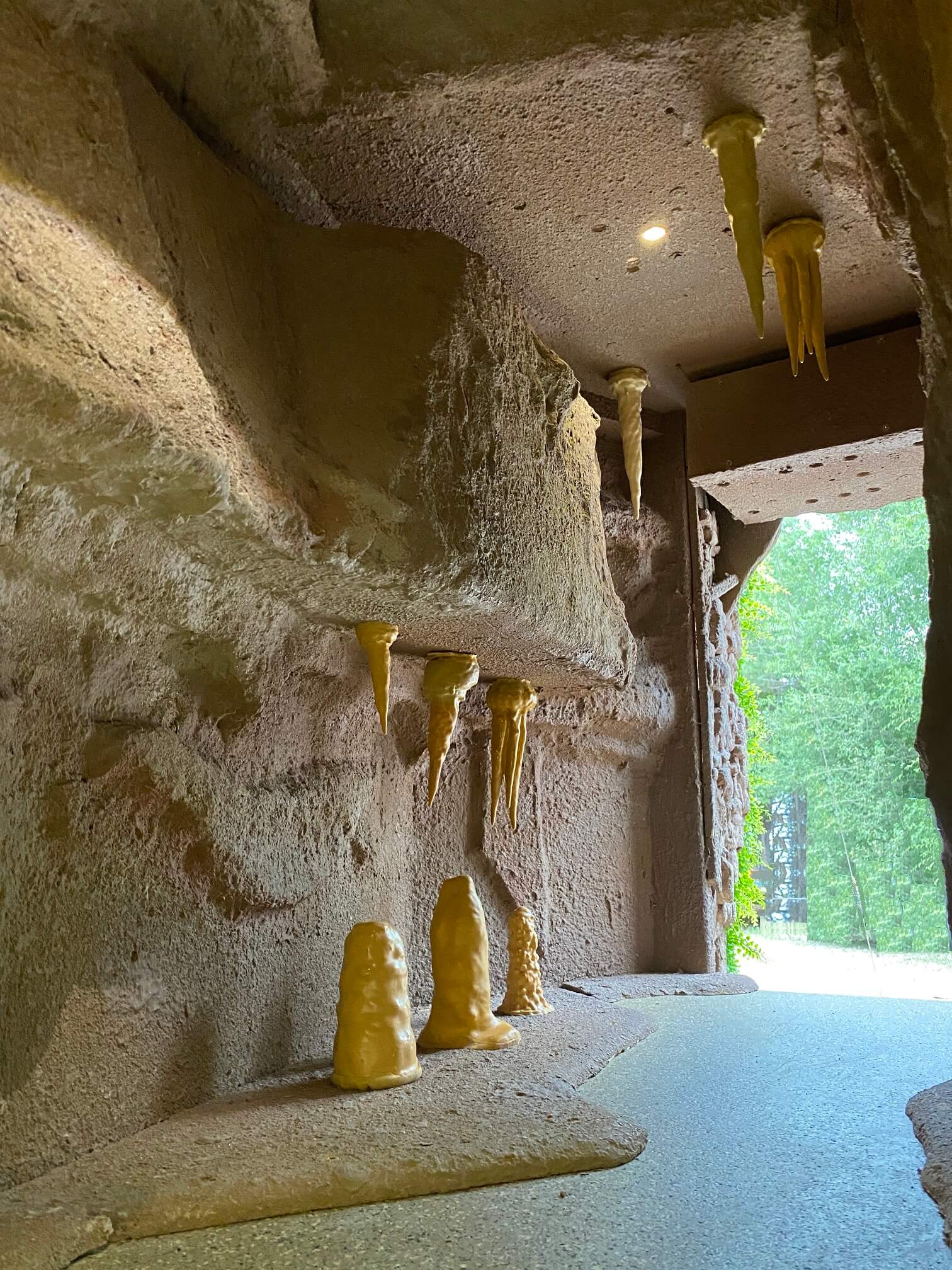
Create joy. Change the world.
CaveSim turns learning into fun. If your organization wants to make the world a better place by teaching kids about science, exploration, and conservation, a CaveSim system might be the perfect addition to your programs.
Let's start your project
Contact us or fill out the form below to start the conversation about how CaveSim can help you accomplish your goals
